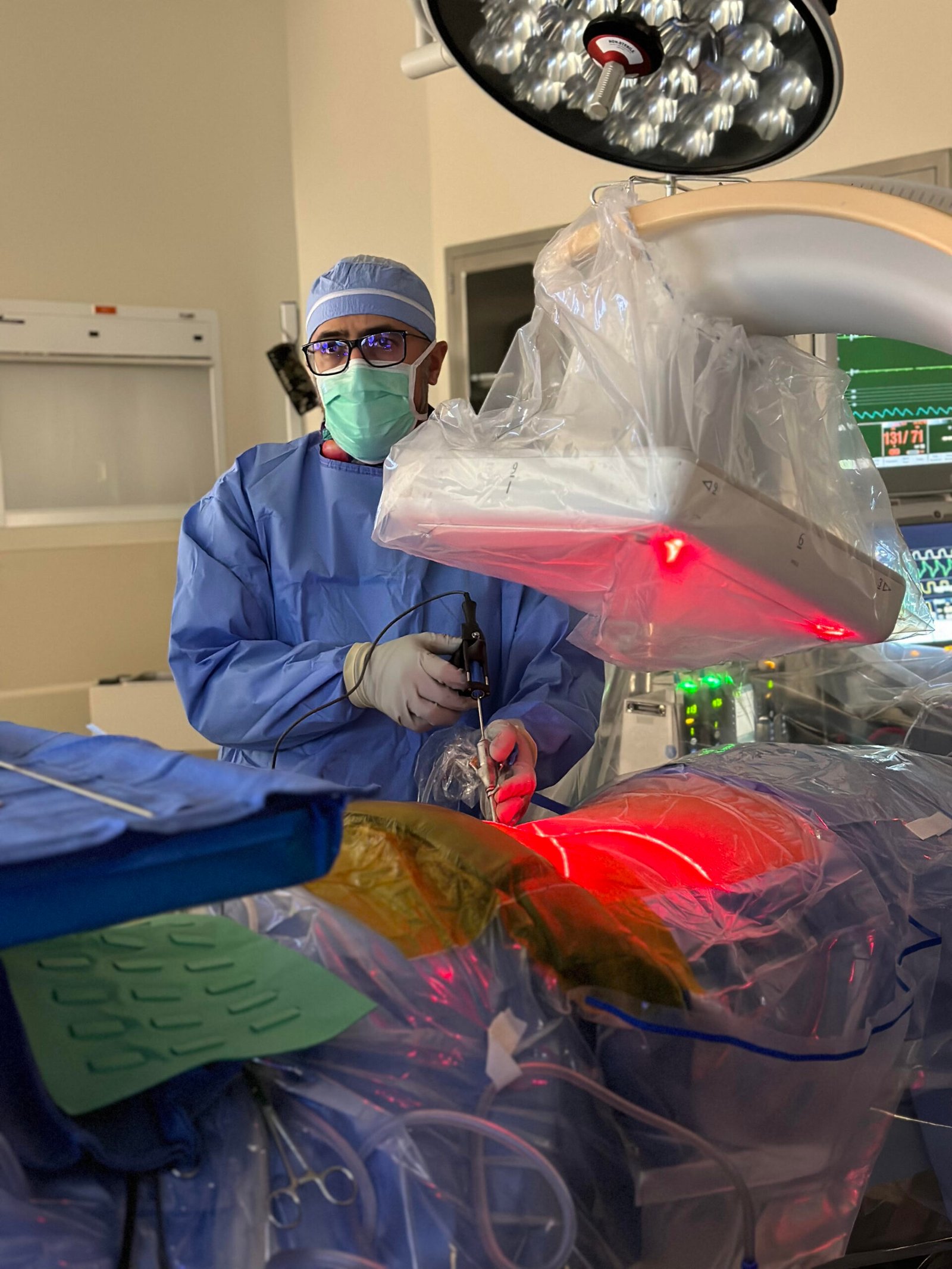When you hear the word “scoliosis,” two images often come to mind: a teenager wearing a rigid, cumbersome back brace, or the prospect of a major surgery involving metal rods and screws to fuse the spine. For decades, these have been the primary tools in the fight against significant spinal curves in growing adolescents. While effective, they each come with their own set of challenges—from the social and physical discomfort of bracing to the permanent loss of flexibility that accompanies spinal fusion.
But what if there was another way? A modern approach that works with a child’s natural growth to correct the curve while preserving motion and flexibility?
Enter Vertebral Body Tethering (VBT), often called spinal tethering. This innovative surgical technique is rewriting the rulebook for a select group of young patients, offering a powerful alternative that bridges the gap between bracing and fusion. It’s not just a new procedure; it’s a new philosophy in scoliosis treatment—one that harnesses the power of growth itself.
A Quick Refresher: The Challenge of Scoliosis
Scoliosis is a sideways curvature of the spine, most often diagnosed in adolescents during their pre-pubescent growth spurt. While small curves are common and often require only observation, moderate to severe curves can progress, leading to pain, cosmetic concerns, and in rare cases, issues with heart and lung function.
The traditional treatment path has been clear-cut:
- Observation: For mild curves (under 25-30 degrees).
- Bracing: For moderate curves (typically 30-45 degrees) in a growing child, to prevent the curve from getting worse.
- Spinal Fusion: For severe curves (over 45-50 degrees), where vertebrae are permanently fused together with rods and screws to create a single, solid bone, stopping the curve’s progression and providing correction.
Spinal fusion is the gold standard for severe curves and has helped countless individuals live healthier lives. However, its primary drawback is significant: the fused portion of the spine no longer bends, twists, or moves. For a young, active person, this permanent loss of mobility is a major consideration. This very limitation is what paved the way for the development of spinal tethering.
How Spinal Tethering Works: Guiding Growth, Not Forcing It
Imagine a young sapling that is starting to grow crooked. Instead of forcing it straight with a rigid stake, you could tie a flexible tether to one side. As the sapling grows taller, the tether gently guides it, encouraging it to grow into a straighter position.
This is the elegant principle behind Vertebral Body Tethering.
VBT is a growth modulation technique. The surgery is performed on the convex side of the curve—the outside of the “C” or “S” shape. Using a minimally invasive thoracoscopic approach (small incisions on the side of the chest), the surgeon places titanium screws into the vertebral bodies of the curved section of the spine. A strong, flexible, rope-like cord, known as the tether, is then threaded through these screws and pulled taut.
Here’s where the magic happens:
- The tension from the tether slows down the growth on the convex (outer) side of the curve.
- Meanwhile, the concave (inner) side of the curve is left untouched and continues to grow at its normal rate.
- As the child continues to grow, the unrestrained side “catches up,” causing the spine to gradually straighten out over time.
Instead of fighting against the body, VBT cleverly uses the patient’s remaining growth as a therapeutic tool. The result is a straighter spine that maintains its natural flexibility and movement.
Who is the Ideal Candidate for VBT?
Spinal tethering is a groundbreaking option, but it is not suitable for everyone with scoliosis. The ideal candidate profile is quite specific, as the procedure relies entirely on the patient’s remaining growth potential.
A good candidate for VBT typically is:
- Skeletally Immature: They must still have significant growth remaining. Surgeons use indicators like the Risser sign (a measure of pelvic bone growth) to determine this. This is the most critical factor.
- Diagnosed with Idiopathic Scoliosis: This is the most common type of scoliosis with no known cause.
- Within a Specific Curve Range: Generally, curves between 35 and 65 degrees are considered. This is often the “gray area” where a curve is too severe for bracing alone, but the patient and family wish to avoid the permanence of fusion.
- Has a Flexible Curve: The spine must be flexible enough to show some correction on bending X-rays.
Because the window of opportunity is tied to a child’s growth spurt, early diagnosis and consultation with a specialist are crucial for families interested in this option.
The Procedure, Recovery, and Long-Term Outlook
One of the most appealing aspects of VBT is its minimally invasive nature. Compared to traditional open-back spinal fusion, the thoracoscopic approach involves smaller incisions, less muscle disruption, reduced blood loss, and generally less post-operative pain.
- The Surgery: Typically takes several hours under general anesthesia.
- Hospital Stay: Patients usually stay in the hospital for 2 to 4 days.
- Recovery: Most patients can return to school within 2 to 4 weeks. The return to full, unrestricted physical activity and sports is often much quicker than with spinal fusion, usually within six weeks to a few months, depending on the surgeon’s protocol.
The long-term goal is a corrected, stable, and, most importantly, mobile spine. Patients can run, jump, tumble, and participate in sports without the rigid constraints of a fused segment.
The Benefits vs. The Risks
Like any surgical procedure, VBT has a profile of benefits and potential risks that must be carefully weighed.
Key Benefits:
- Preservation of Motion: This is the single biggest advantage over fusion.
- Growth-Guided Correction: Uses the body’s own power to straighten the spine.
- Less Invasive Surgery: Smaller scars and a potentially faster, less painful recovery.
- Excellent Cosmetic Results: Achieves curve correction without the large midline scar of traditional fusion.
Potential Risks & Considerations:
- It’s a Newer Technique: While results have been very promising for over a decade, the very long-term (30+ year) data is still being accumulated, unlike with spinal fusion.
- Tether Breakage: The flexible cord can, in some cases, break over time. While this doesn’t always require revision surgery, it is a possibility.
- Overcorrection: If the tether is too tight or the child has a more robust growth spurt than anticipated, the curve can sometimes correct past straight and curve in the opposite direction.
- Potential for Future Fusion: In a small percentage of cases, the tethering may not be successful in halting the curve’s progression, and a spinal fusion may still be necessary later on.
The Future is Flexible
Spinal Tethering surgery represents a paradigm shift in how we approach scoliosis in growing children. It moves away from a model of rigid fixation and towards a dynamic, biological correction. For the right patient at the right time, it offers the incredible possibility of not only a straighter spine but a future filled with unrestricted movement and activity.
If your child has been diagnosed with scoliosis, it’s essential to have a comprehensive discussion with a pediatric orthopedic surgeon who specializes in all forms of scoliosis treatment. Ask questions, explore every avenue, and find out if a modern, motion-sparing option like Vertebral Body Tethering could be the right path for your family. The future of scoliosis treatment is here, and it’s more flexible than ever.


